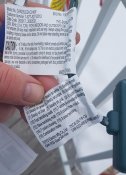Ilovelights
New elf
I've been buying strings of remote controlled lights for years. My old band stage controller was ghosting horribly so I decide to go looking for something new.
OH OH, so here I am to learn and change. Hmm wonder if I'll ever be able to make some of those old strings work with a new system. Guess i'll find out.
OH OH, so here I am to learn and change. Hmm wonder if I'll ever be able to make some of those old strings work with a new system. Guess i'll find out.



